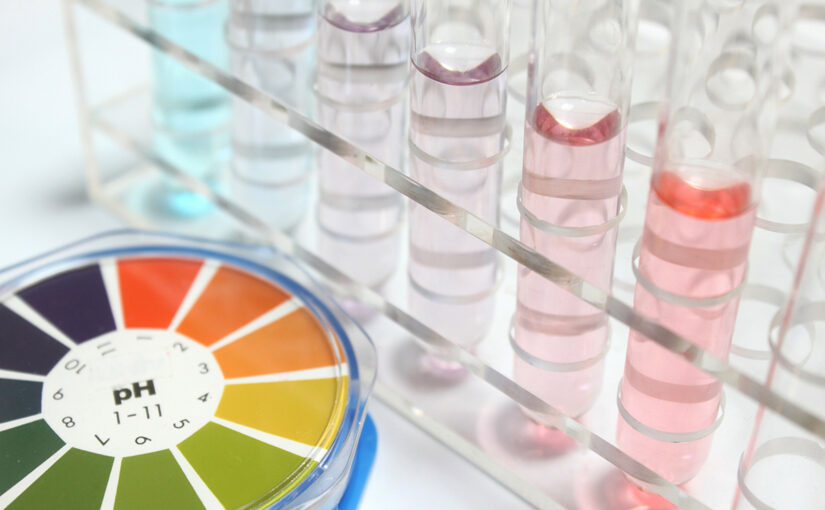A lot of the questions our Skin Coaches receive can be answered with an explanation including pH. Although you may not remember exactly what pH is from your high school chemistry days, it plays a huge role in the health of your skin and just how well your products are actually working.
What is it?
The pH of a substance is the “potential of Hydrogen” and describes the acid to alkaline ratio of the substance. It is represented on a scale of 0-14, with 0 being the most acidic and 14 being the most alkaline, with water at a neutral 7.
Why is skin pH important?
Your skin’s natural pH is between 4.5 and 5.5, which is slightly acidic. It is rare for someone’s skin to be too acidic, but if it is, the skin becomes super sensitive and irritation-prone. It is much more common for skin to become too alkaline. Skin that is too alkaline becomes dry and sensitive, and can even give you eczema. You will exhibit more fine lines and crows feet, and be more prone to sun damage and breakouts. Skin functions and looks its best when its pH levels are balanced.
The acid mantle of your skin is the slightly acidic external layer that keeps bacteria and environmental pollution out and keeps lipids and moisture in. When the acid mantle becomes too alkaline, it is unable to guard the body against bacteria, which is what leads to breakouts and moisture loss. Skin is more acidic when you are younger, so it provides good protection, looks healthy, and heals quickly. But after your early 20s, the pH starts to become more neutral, which makes it more susceptible to dry skin, wrinkles, and sensitivity.
How does pH affect my products?
A product’s ability to penetrate your skin is determined by its pH. anti-aging products in particular are most effective at lower pHs. If you have two products with the same concentration of an active ingredient, but one has a pH of 3.2 and the other is at 5.5, there is going to be a huge difference in how effective the products are.
Do you love foaming cleanser but hate the tight, dry feeling it leaves you with? The main ingredients that create the foam typically have a pH between 9 and 10 and are extremely drying on skin. You have probably also been told not to wash your face with soap. This is because soap is extremely alkaline (around a 9), so it will leave your skin at a much higher pH than it needs to be balanced. Because these cleansers raise the skin’s pH, it will require you to use a toner afterwards, in order to lower the skin’s pH back down, creating an additional cost and taking extra time. A low pH, non-soap cleanser like our Daily Cleanser will leave your skin clean without stripping your skin’s acid mantle and eliminate the need for a toner.
What to look for
So what pH should you be looking for in your skin care products? It depends on the product and will determine the order in which you use them. For treatment products, like our Fear Free Peels, look for a pH around 4 to ensure that it will be able to penetrate below the surface to treat your skin at a cellular level. A product with a lower pH will penetrate more deeply into the skin, so it will be more effective, but you don’t want to go too low with the pH and have the product be too intense for continuous use.
When a product’s pH is at or above your skin’s natural pH (4.5-5.5), the product will sit on the skin’s surface and not be driven down to deeper layers. This is good for products like sunscreens and heavy moisturizers, which you want to be sitting on top of your skin and working at the surface.
When you apply your products, you often hear that a good rule of thumb is to apply from thinnest to thickest. pH is another good way to determine the order in which you apply your skin care regimen. Typically, you will apply products from the lowest pH to the highest. If you have any questions about which order to apply or if a product’s pH is effective, give one of our Skin Coaches a call and we would be glad to help you figure it out!
Do you look at pH when shopping for skin care? Let us know in the comments below!


